Google Professional Cloud Network Engineer
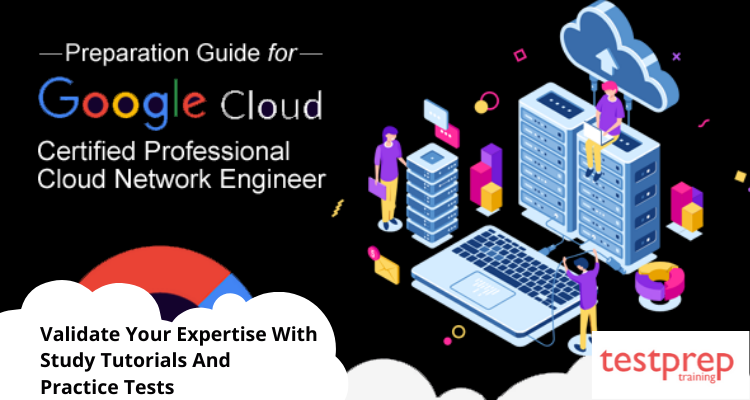
Google Cloud Platform has established itself as one of the most well-known cloud platforms. It has effectively managed to deliver high competency to the previously existing cloud platform giants – Amazon Web Services and Microsoft Azure – in a short period of time. The Google Cloud Platform has reached the pinnacle of achievement, and the Google Professional Cloud Network Engineer (GCP) certification is highly recommended for use in VPCs, hybrid connectivity, network services, and security.
Skills Validated:
Google Professional Cloud Network Engineer Certification validates the following skills:
- Design, plan, and prototype a GCP Network
- Implement a GCP Virtual Private Cloud (VPC)
- Configure network services
- Implement hybrid interconnectivity
- Implement network security
Who Should take the Google Professional Cloud Network Engineer Exam?
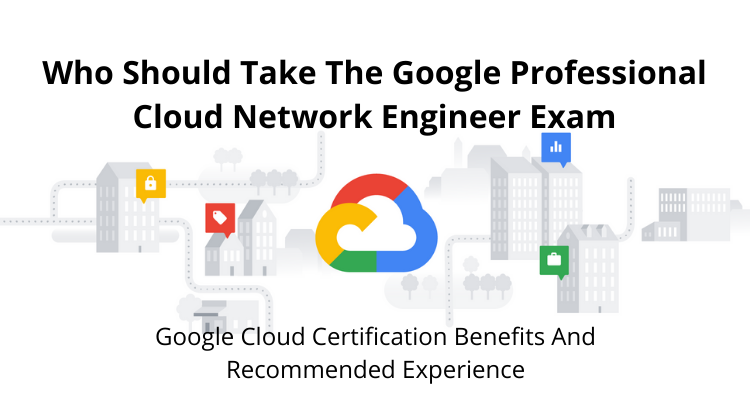
A Google Professional Cloud Network Engineer is someone who has the expertise in executing and managing network architectures in the Google Cloud Platform. This certification exam is mainly focused on the acknowledgment and validation of a candidate’s skills in performing the role of a reputed Professional Cloud Network Engineer.
Recommended Experience:
- At least 1 year of hands-on experience working with Google Cloud Platform
- Practical work experience in networking or cloud teams with architects involved in creating the infrastructure
- Considerable experience in the implementation of hybrid connectivity, VPCs, network services, and security of the network architectures
- Knowledge of Cloud implementations using the command line interface or the GCP Console
About Google Professional Cloud Network Engineer
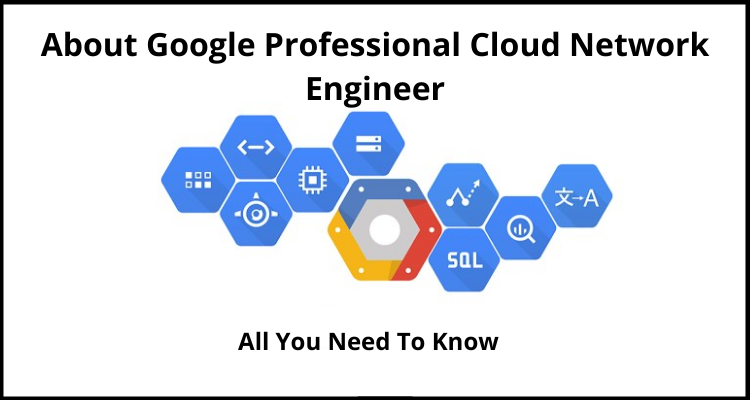
Exam Details
Google Professional Cloud Network Engineer Exam Questions are in Multiple Choice and Multiple Select Format. You get 2 hours to complete 102 questions of the exam. Also, the exam will cost you $200 USD.
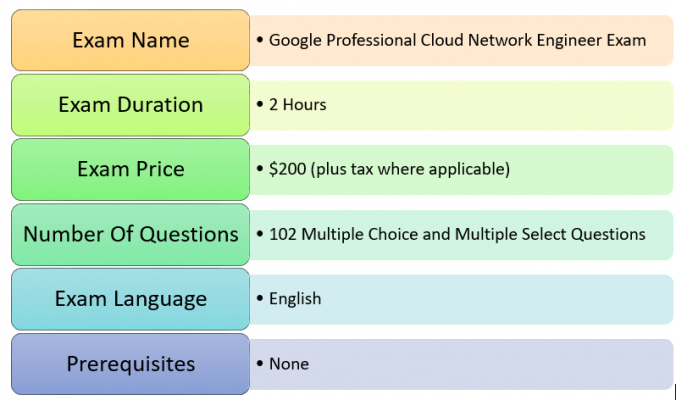
Exam Terms and Conditions
Certification/Revocation
- The revelation of Confidential Information is seen by Google as a clear violation of its Terms. A reported breach might jeopardise Google’s certification programmes’ security and integrity.
- The examinations are provided to applicants solely for the purpose of proving their abilities and expertise in that area.
- Any breach of these Terms will result in your inability to take any Google Certification Exam. Furthermore, Google has the right to decertify you and to terminate any commercial relationship with you, including access to its test services, at its sole discretion.
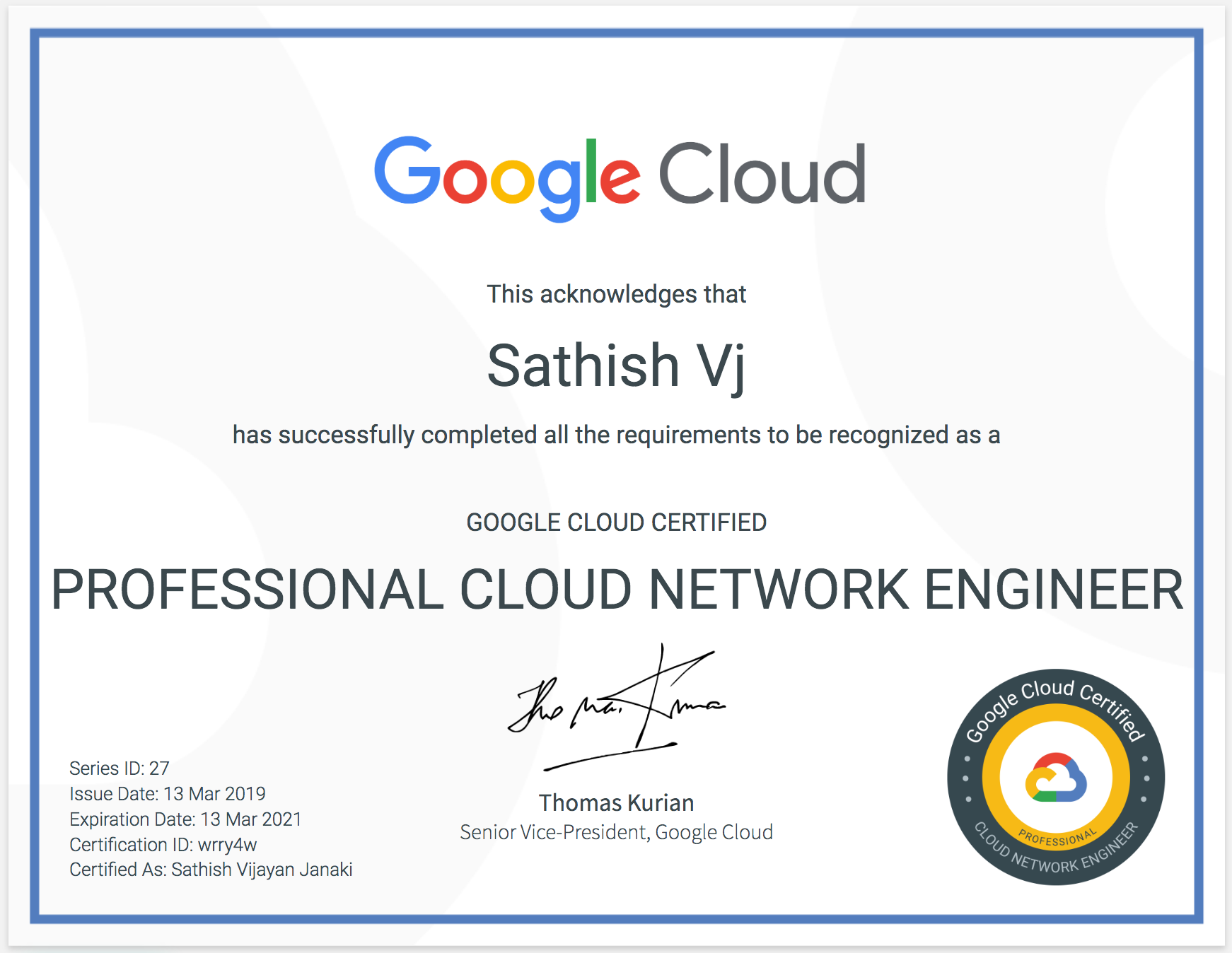
Certification Renewal / Recertification
Just for maintaining your certification status, you must get yourself recertified. Unless otherwise mentioned in the test specifications, Google Cloud certificates are only valid for a period of two years. Recertification efforts can be made up to 60 days before your certification expires.
Check Google Professional Cloud Network Engineer Interview Questions
Failing and Retaking the Exam
If you fail the test, you have the option to retake it whenever you choose. However, you must wait at least fourteen (14) days before taking the exam again. If you fail on the second try as well, you may repeat the exam after a waiting period of at least sixty (60) days. You will only be allowed three retakes, the third of which will need a one-year waiting period.
For More Details See – Google Professional Cloud Network Engineer FAQs
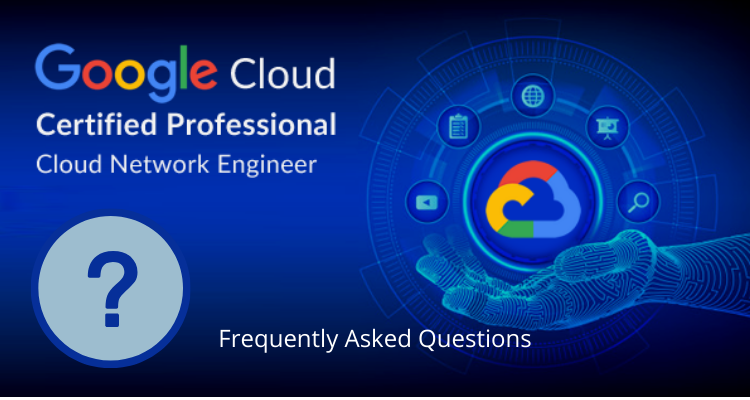
Professional Cloud Network Engineer Course Outline
Google Cloud Platform offers a comprehensive test guide that includes the exam domains and objectives. The Google Professional Cloud Network Engineer Courses also cover the following areas:
Topic 1: Designing, planning, and prototyping a Google Cloud network
1.1 Designing the overall network architecture. Considerations include:
- High availability, failover, and disaster recovery strategies (Google Documentation: Overview of the high availability configuration, Enabling and disabling high availability on an instance,Disaster recovery scenarios for applications)
- DNS strategy (e.g., on-premises, Cloud DNS, GSLB) (Google Documentation: Cloud DNS)
- Security and data exfiltration requirements
- Load balancing
- Applying quotas per project and per VPC
- Hybrid connectivity (e.g., Google private access for hybrid connectivity) (Google Documentation: Google Cloud Hybrid Connectivity, Configuring Private Google Access for on-premises hosts)
- Container networking (Google Documentation: Network overview)
- IAM roles (Google Documentation: IAM)
- SaaS, PaaS, and IaaS services (Google Documentation: About Google Cloud services)
- Microsegmentation for security purposes (e.g., using metadata, tags, service accounts) (Google Documentation: Google Cloud networking)
1.2 Designing a Virtual Private Cloud (VPC) instances. Considerations include:
- IP address management and bring your own IP (BYOIP) (Google Documentation: IP Addresses, Reserving a static internal IP address)
- Standalone or shared VPC (Google Documentation: Shared VPC overview, Provisioning Shared VPC)
- Multiple vs. single (Google Documentation: Best practices and reference architectures for VPC design)
- Regional vs. multi-regional
- VPC Network Peering (Google Documentation: VPC Network Peering overview)
- Firewall (e.g., service account-based, tag-based) (Google Documentation: VPC firewall rules overview)
- Custom Routes (Google Documentation: Routes overview)
- Using managed services (e.g., Cloud SQL, Memorystore)
- Third-party device insertion (NGFW) into VPC using multi-NIC and internal load balancer as a next hop or equal-cost multi-path (ECMP) routes
1.3 Designing a hybrid and multi-cloud network. Considerations include:
- Dedicated Interconnect vs. Partner Interconnect
- Multi-cloud connectivity
- Direct Peering (Google Documentation: Carrier Peering overview, Direct Peering overview)
- IPsec VPN (Google Documentation: Cloud VPN overview)
- Failover and disaster recovery strategy (Google Documentation: Disaster recovery scenarios for applications, Best practices for Cloud Router)
- Regional vs. global VPC routing mode
- Accessing multiple VPCs from on-premises locations (e.g., Shared VPC, multi-VPC peering topologies)
- Bandwidth and constraints provided by hybrid connectivity solutions
- Accessing Google Services/APIs privately from on-premises locations
- IP address management across on-premises locations and cloud
- DNS peering and forwarding
1.4 Designing a container IP addressing plan for Google Kubernetes Engine (Google Documentation: Network overview)
- Public and private cluster nodes
- Control plane public vs. private endpoints
- Subnets and alias IPs
- RFC 1918, non-RFC 1918, and privately used public IP (PUPI) address options
Topic 2: Implementing a Virtual Private Cloud (VPC) Instances
2.1 Configuring VPCs. Considerations include:
- Configuring Google Cloud VPC resources (CIDR range, subnets, firewall rules, etc.) (Google Documentation: VPC firewall rules overview, Creating instances with multiple network interfaces, Configuring alias IP ranges)
- VPC Network Peering (Google Documentation: VPC Network Peering overview)
- Creating a shared VPC and explaining how to share subnets with other projects (Google Documentation: Provisioning Shared VPC)
- Configuring API access to Google services (e.g., Private Google Access, public interfaces) (Google Documentation: Overview of API access)
- Expanding VPC subnet ranges after creation
2.2 Configuring routing. Tasks include:
- Static vs. dynamic routing
- Global vs. regional dynamic routing
- Routing policies using tags and priority
- Internal load balancer as a next hop
- Custom route import/export over VPC Network Peering
2.3 Configuring and maintaining Google Kubernetes Engine clusters. Considerations include:
- VPC-native clusters using alias IPs (Google Documentation: Creating a VPC-native cluster)
- Clusters with shared VPC (Google Documentation: Setting up clusters with Shared VPC)
- Creating Kubernetes Network Policies
- Private clusters and private control plane endpoints
- Adding authorized networks for cluster control plane endpoints
2.4 Configuring and managing firewall rules. Considerations include:
- Target network tags and service accounts (Google Documentation: Configuring network tags, VPC firewall rules overview)
- Rule Priority (Google Documentation: VPC firewall rules overview)
- Network protocols (Google Documentation: VPC firewall rules overview)
- Ingress and egress rules (Google Documentation: VPC firewall rules overview)
- Firewall rule logging
- Firewall Insights
- Hierarchical firewalls
2.5 Implementing VPC Service Controls. Considerations include:
- Creating and configuring access levels and service perimeters
- VPC accessible services
- Perimeter bridges
- Audit logging
- Dry run mode
Topic 3: Configuring network services
3.1 Configuring load balancing. Considerations include:
- Backend services and network endpoint groups (NEGs)
- Firewall rules to allow traffic and health checks to backend services
- Health checks for backend services and target instance groups
- Configuring backends and backend services with balancing method (e.g., RPS, CPU, Custom), session affinity, and capacity scaling/scaler
- TCP and SSL proxy load balancers (Google Documentation: TCP Proxy Load Balancing overview, SSL Proxy Load Balancing overview)
- Load balancers (e.g., External TCP/UDP Network Load Balancing, Internal TCP/UDP Load Balancing, External HTTP(S) Load Balancing, Internal HTTP(S) Load Balancing)
- Protocol forwarding
- Accommodating workload increases using autoscaling vs. manual scaling
3.2 Configuring Google Cloud Armor policies. Considerations include:
- Security policies
- Web application firewall (WAF) rules (e.g., SQL injection, cross-site scripting, remote file inclusion)
- Attaching security policies to load balancer backends
3.3 Configuring Cloud CDN. Considerations include:
- Enabling and disabling (Google Documentation: Setting up Cloud CDN with a backend bucket, Using Cloud CDN)
- Cloud CDN
- Cache keysInvalidating cached objects
- Signed URLs
- Custom origins
3.4 Configuring and maintaining Cloud DNS. Considerations include:
- Managing zones and records (Google Documentation: Managing Zones)
- Migrating to Cloud DNS (Google Documentation: Migrating to Cloud DNS)
- DNS Security Extensions (DNSSEC) (Google Documentation: DNS Security (DNSSEC))
- Forwarding and DNS server policies
- Integrating on-premises DNS with GCP (Google Documentation: DNS Best practices, Cloud DNS Overview)
- Split-horizon DNS
- DNS peering
- Private DNS logging
3.5 Enabling other network services. Considerations include:
- Addressing
- Port allocations
- Customizing timeouts
- Logging and monitoring
- Restrictions per organization policy constraints
3.6 Configuring network packet inspection. Considerations include:
- Packet Mirroring in single and multi-VPC topologies
- Capturing relevant traffic using Packet Mirroring source and traffic filters
- Routing and inspecting inter-VPC traffic using multi-NIC VMs (e.g., next-generation firewall appliances)
- Configuring an internal load balancer as a next hop for highly available multi-NIC VM routing
Topic: 4 Implementing hybrid Interconnectivity
4.1 Configuring Cloud interconnect. Considerations include:
- Dedicated Interconnect connections and VLAN attachments
- Partner Interconnect connections and VLAN attachments
4.2 Configuring a site-to-site IPsec VPN. Considerations include:
- High availability VPN (dynamic routing)
- Classic VPN (e.g., route-based routing, policy-based routing)
4.3 Configuring Cloud Router:
- Border Gateway Protocol (BGP) attributes (e.g., ASN, route priority/MED, link-local addresses)
- Custom route advertisements via BGP
- Deploying reliable and redundant Cloud Routers
Section 5: Managing, monitoring, and optimizing network operations
5.1 Logging and monitoring with Google Cloud’s operations suite. Considerations include:
- Reviewing logs for networking components (e.g., VPN, Cloud Router, VPC Service Controls)
- Monitoring networking components (e.g., VPN, Cloud Interconnect connections and interconnect attachments, Cloud Router, load balancers, Google Cloud Armor, Cloud NAT)
5.2 Managing and maintaining security. Considerations include:
- Firewalls (e.g., cloud-based, private)
- Diagnosing and resolving IAM issues (e.g., Shared VPC, security/network admin)
5.3 Maintaining and troubleshooting connectivity issues. Considerations include:
- Draining and redirecting traffic flows with HTTP(S) Load Balancing
- Monitoring ingress and egress traffic using VPC Flow Logs
- Monitoring firewall logs and Firewall Insights
- Managing and troubleshooting VPNs
- Troubleshooting Cloud Router BGP peering issues
5.4 Monitoring, maintaining, and troubleshooting latency and traffic flow. Considerations include:
- Testing network throughput and latency
- Diagnosing routing issues
- Using Network Intelligence Center to visualize topology, test connectivity, and monitor performance
Preparation Guide For Google Professional Cloud Network Engineer
Choosing the best exam preparation strategy is very crucial to crack any certification exam. When it comes to the Google Professional Cloud Network Engineer Exam, it is of utmost importance that you make the right choice and head towards a successful, and rewarding career in the Google cloud platform. So let’s begin with the preparation with Google Professional Cloud Network Engineer Study Guide.
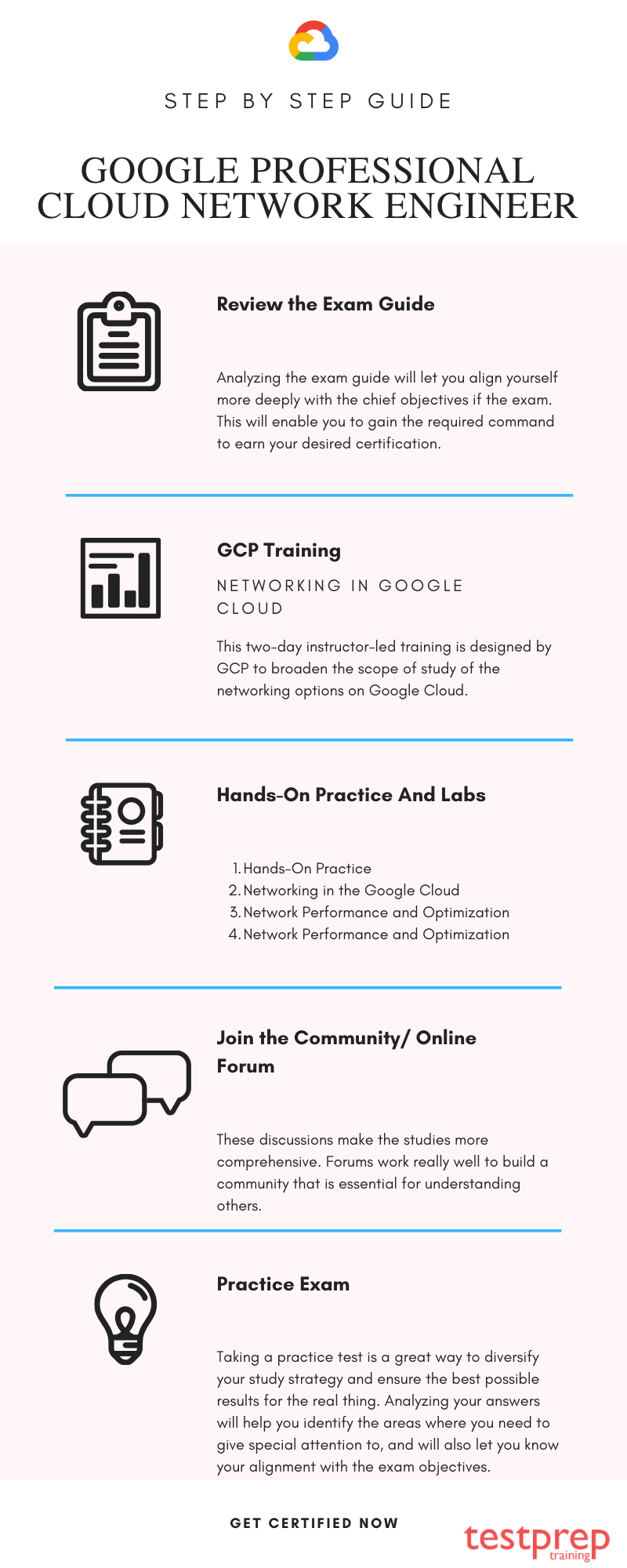
1. Review the Exam Guide
GCP provides the candidates taking it’s certification, with a well-structured exam guide. Visit the Official website of GCP, to have a clearer view of the exam guide. Analyzing the exam guide will let you align yourself more deeply with the chief objectives if the exam. This will enable you to gain the required command to earn your desired certification.
2. Google Professional Cloud Network Engineer Training
Networking in Google Cloud
GCP created this two-day instructor-led programme to widen the breadth of study of Google Cloud networking solutions. This programme combines presentations, demonstrations, and hands-on laboratories in a well-designed format. Google hopes that by using these training approaches, applicants will be able to study and install Google Cloud networking technologies.
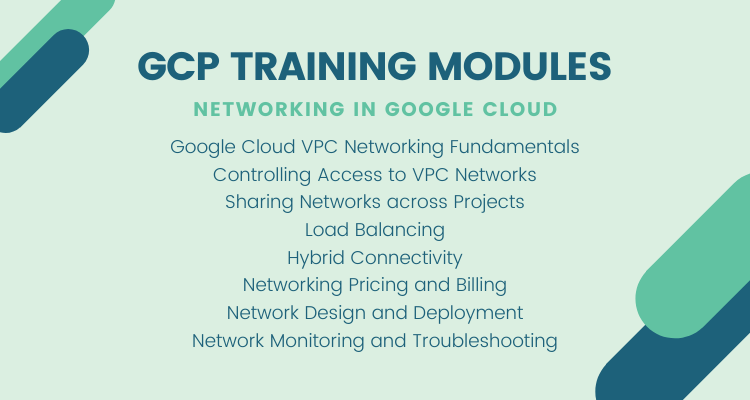
This course will train you in Google Virtual Private Cloud (VPC) networks, subnets, firewalls, interconnection among networks, load balancing, Cloud DNS, Cloud CDN, and Cloud NAT.
3. Hands-On Practice
Gaining hands-on practice is an ideal way to crack the Google certification exam. For the GCP Cloud Network Engineer Exam, GCP recommends joining the following to elevate your proficiency in the cloud platform.
Google Cloud Free Tier:
GCP provides you with free materials to help you develop a deeper understanding of Google Cloud services by allowing you to experiment. The Google Cloud Free Tier meets the needs of professionals at all levels, including novices and seasoned experts. The Google Cloud Free Tier is divided into two sections:
- 12-month free trial plus a credit of $300 that may be used with Google Cloud services
- Always Free – It provides limited access to Google Cloud resources, without charging money
Networking in the Google Cloud:
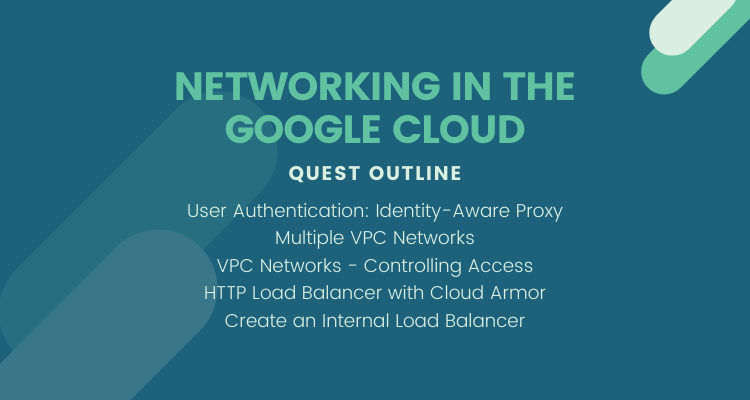
This is a basic-level quest that covers all of the Google Cloud networking services that are required. Taking this quest will allow you to gain practical experience with specialised tools for the development of mature networks. By educating you from the basics to the advanced level features of the GCP, you will undoubtedly get competence in the practical experience of establishing resilient networks.
Network Performance and Optimization:
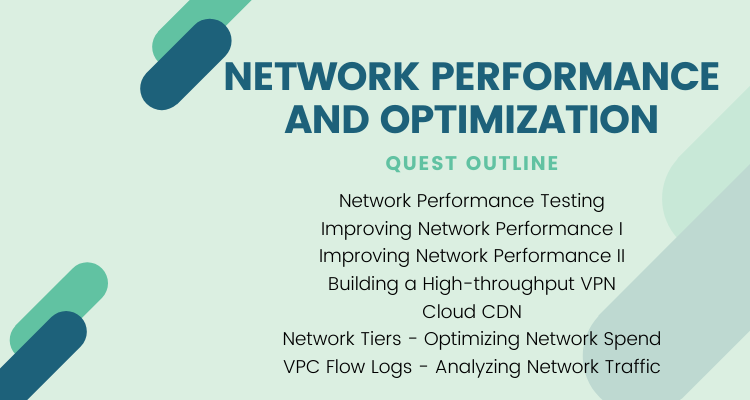
The Network Performance and Optimization quest is made up of laboratories that will teach you how to leverage real-world use cases to improve your network performance. Furthermore, you will learn the best strategies for resolving typical networking obstacles as part of this journey. Clearly, this quest is aimed for GCP developers who want to improve the speed and reliability of their applications.
4. Hands-on Lab
Security & Identity Fundamentals
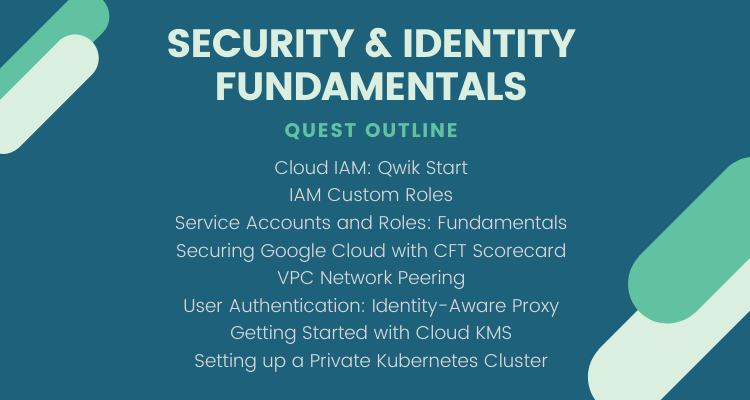
This quest will train you with the fundamentals of Identity and Access Management (IAM) and also Security in Google Cloud Platform. Through this hands-on lab, Google will help you gain expertise in network security by provisioning VPCs and VPNs, and also in learning about the tools available for security threat and data loss protections.
5. Join the Community/ Online Forum
A healthy debate is always useful, regardless of where it takes place. The same may be said of internet discussion boards. This is a great opportunity for students to talk about their problems and see how their peers are preparing for examinations. One advantage of anything that is available online is the number of individuals who can participate. A small group of individuals can participate in an offline conversation, but online platforms can reach a larger audience.
When a large number of individuals get involved in a problem, the chances of finding a solution grow dramatically. In addition, having different points of view makes the material more lively. The research get more extensive as a result of these conversations. Introverts, who may normally avoid dialogues, get an opportunity to express themselves. Forums are excellent for forming a community that is necessary for understanding others.
6. Practice Exam
Regardless of how you prepare for the Google Professional Cloud Network Engineer Exam, a practice run or two can help you in more ways than you might expect. Taking a practice test is a great way to diversify your study strategy and ensure the best possible results for the real thing. GCP offers the Google Professional Cloud Network Engineer Practice Exam, to enable candidates to gain insight into the pattern of questions asked. Analyzing your answers will help you identify the areas where you need to give special attention to, and will also let you know your alignment with the exam objectives.

